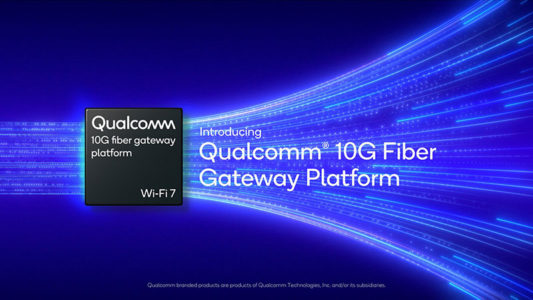Dell checks-in into India’s Growing Healthcare Mid-Market with its “Hospital in a Box” offering
Share This Post
Unlike other industries that were early adopters of IT, healthcare providers have traditionally shied away from making capital-intensive IT investments, owing to cost considerations. In a hyper-competitive industry that has grown in significantly in the last few years in India, healthcare providers have had to make-do with disconnected and fragmented IT systems. In a healthcare provider ecosystem, various stakeholders, ranging from nursing staff to doctors to support staff use their own (information) technology, or in many instances, none whatsoever. The end result is increasing inefficiency and preventable spread of pandemics, stemming from public health practitioners and policymakers having little or no access to meaningful data in real time. Contrast this against a backdrop of patients and care-givers demanding access to increasingly specialised and personalised healthcare procedures.
So, technology adoption is a matter of ‘when’ and ‘how’ and no longer ‘why’. But how does a mid-tier hospital in a Tier-II or Tier-III town of India cope with, and overcome years of rapid organic and inorganic growth, and balance this against the cost implications of implementing a transformational IT infrastructure.
If it maintains status quo, it has to cope with escalating costs and inefficiencies.
If it decides to embrace change, what is the way ahead?
Enter, the Cloud!
Cloud enables healthcare providers to leapfrog the legacy IT challenges, and improves patient centricity and healthcare outcomes. Further, Cloud has been demonstrated to be secure and scalable, allowing for quicker expansion for healthcare providers without worries pertaining to high capex for every new installation or expansion. Cloud implementation is fast, easy and can be personalized to serve the needs of healthcare providers.
The current ratio of doctors per 1,000 people in India is estimated to be just 0.6 and the number of hospital beds per 1,000 people at 1.3, significantly lower than the minimum guideline of 1 doctor and 3.5 beds, respectively, prescribed by the World Health Organisation (WHO). Over a period of time, riding on the back of increasing awareness about lifestyle diseases, higher disposable incomes of consumers, and more industry-friendly policies, the ‘mid-tier hospital’ and ‘nursing home’ segments are the ones that are witnessing the fastest growth. To encourage the private sector to establish hospitals in Tier-II and Tier-III cities, the government has introduced supporting policies such as reduction in import duties on medical equipment, high depreciation on prices of life-saving medical equipment (40%, up from 25%), and a number of other tax incentives for the first five years. Aptly, this is the segment that DELL aims to target for its newly launched solution, “Hospital in a Box” (DELL defines mid-tier hospital segment to include primarily hospitals and small hospitals with 50-100 beds in Tier-II and Tier-III cities). These hospitals are cost and quality conscious, and have limited IT budgets.
The Hospital in a Box
The “Hospital in a Box” solution aims to provide seamless integration of clinical and financial systems at a price point feasible for mid-tier players. The healthcare provider does not need to invest upfront in expensive hardware and software. The Dell solution is deployed on a Public Cloud, in an “any where, any time, any device” model, and includes Enterprise Resource Planning (ERP) and Hospital Information System (HIS) components to harness the power of Software-as-a-Service (SaaS). For the mid-tier hospitals, this would translate into significant cost savings as well as easier and shorter IT set-up cycles, enabling CIOs to better cope with providing support for the rapidly increasing demand for services.
One of the first client wins for Dell Services for its “Hospital in a Box” solution is Dr. Agarwal’s Eye Hospital, a specialty eye-care hospital chain, with more than 50 hospitals. Under this partnership, Dell will help develop the technology roadmap for Dr. Agarwal’s Eye Hospital, to help achieve their aggressive expansion plans in India and overseas markets.
The CMR View
We, at CMR, believe that the mid-market healthcare segment in Tier-II and Tier-III cities is primed to become the primary source of growth and future expansion for the India healthcare industry. Given that the big players have not given serious consideration to go beyond Tier-I cities, this market represents a high potential opportunity for a relatively new entrant.
Therefore, it would appear that the Dell strategy in India is well calibrated as it focuses on developing trust amongst mid-market healthcare providers. The Dell strategy aims to provide new healthcare providers with essential building blocks (ERP and HIS). Once healthcare providers start seeing the positives from the implementation, Dell would suggest additional solutions to manage expansion and growth.
CMR believes that as competition increases and patients become more discerning and demanding, private hospitals would necessarily aim to leverage information technology to optimize productivity, improve patient care and ensure better outcomes. In this scenario, Dell’s solution would be a ‘win-win’ proposition in a fast-expanding market.
While Dell may be a late entrant into the India Healthcare market, the (Perot Services) pedigree and a clear strategy and focus to serve the needs of healthcare providers in Tier-II and Tier-III cities, should have the company primed for healthy growth.













